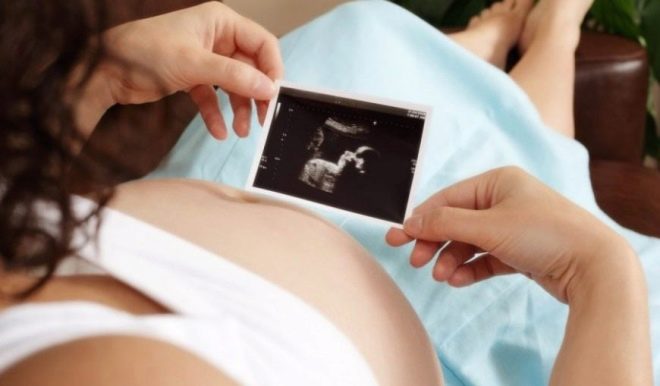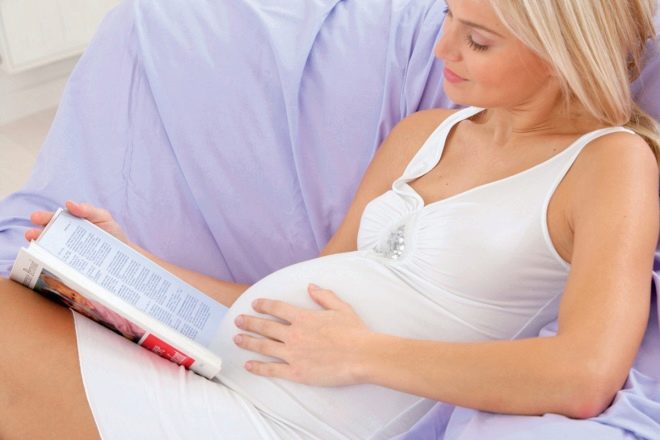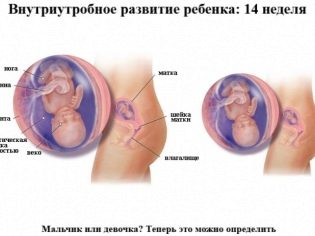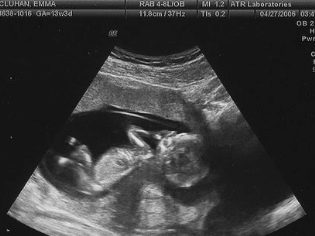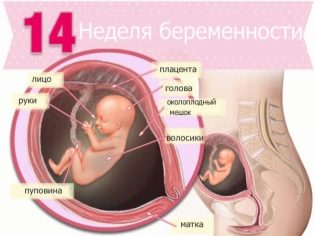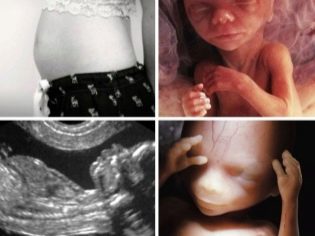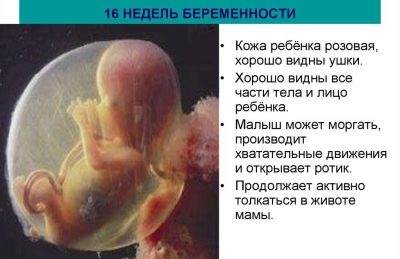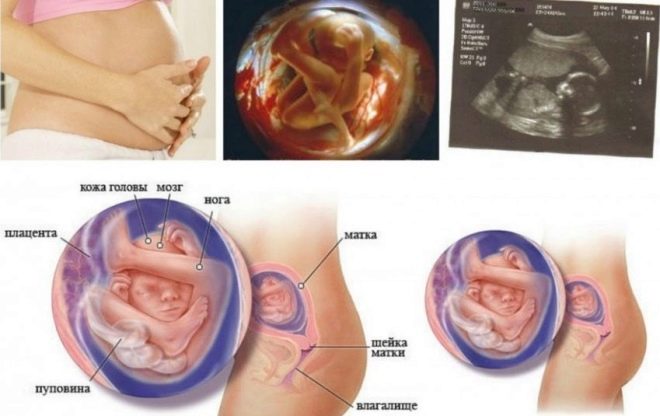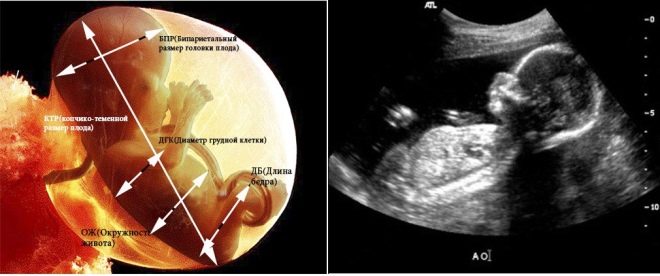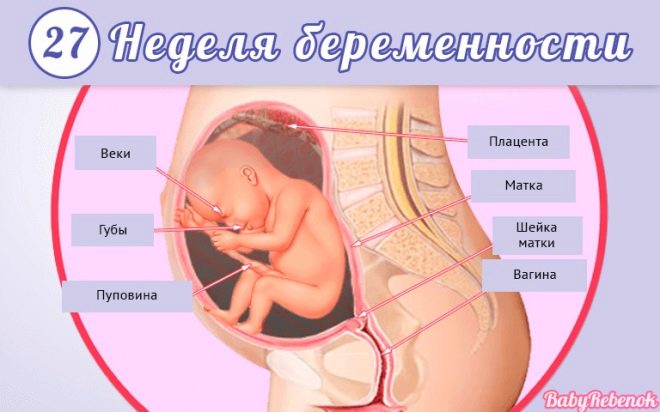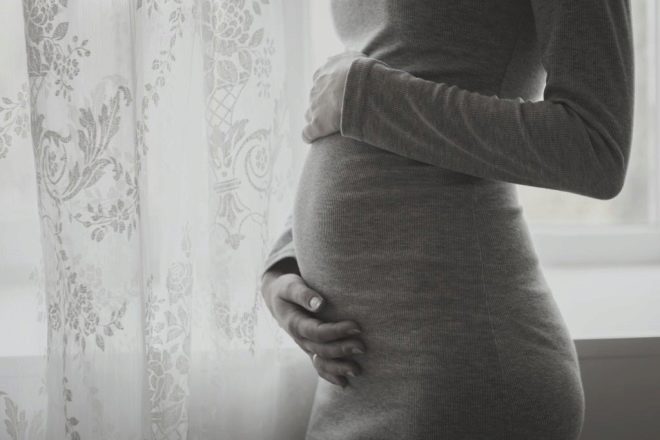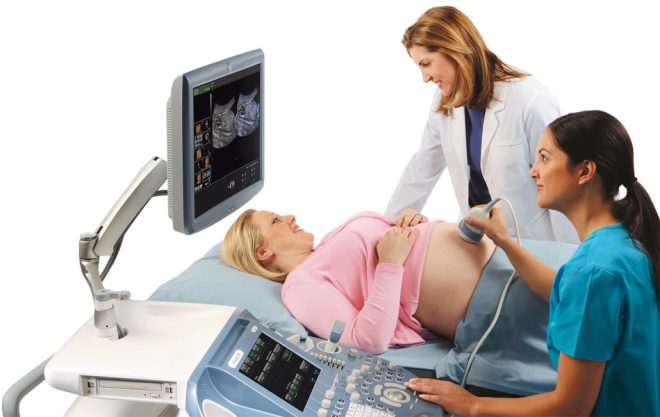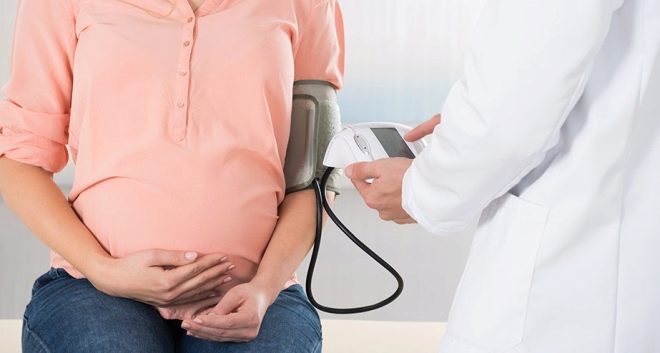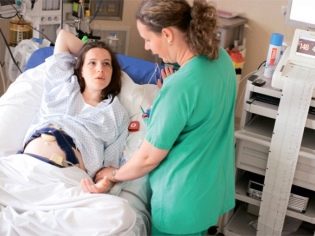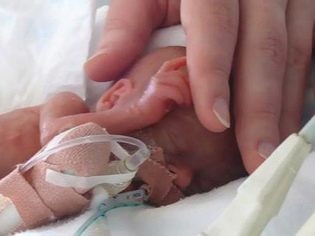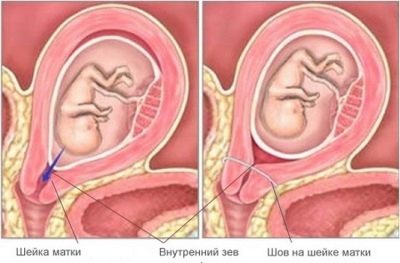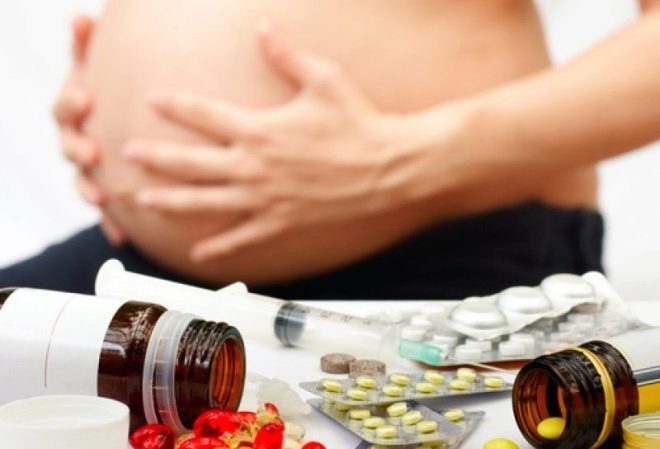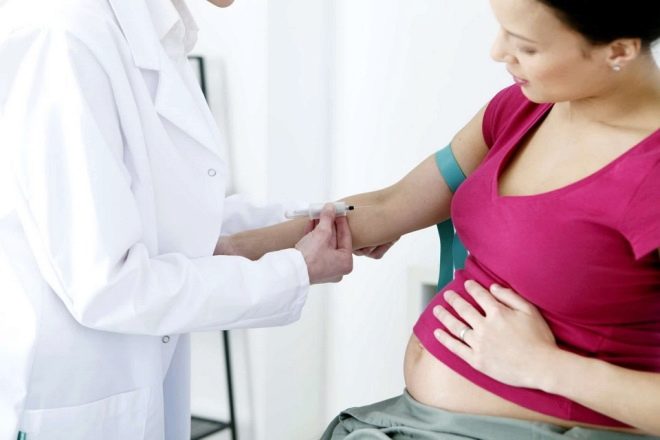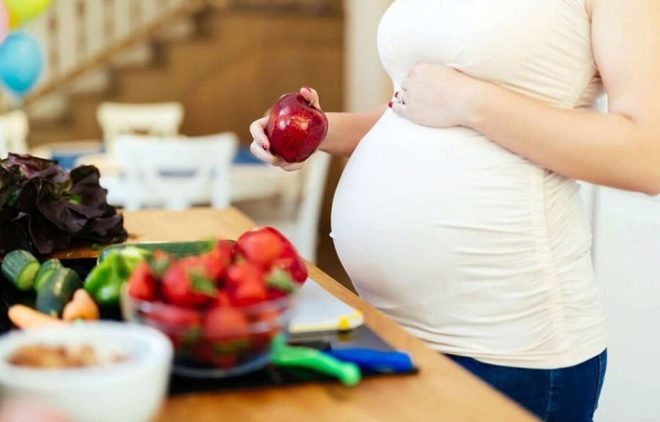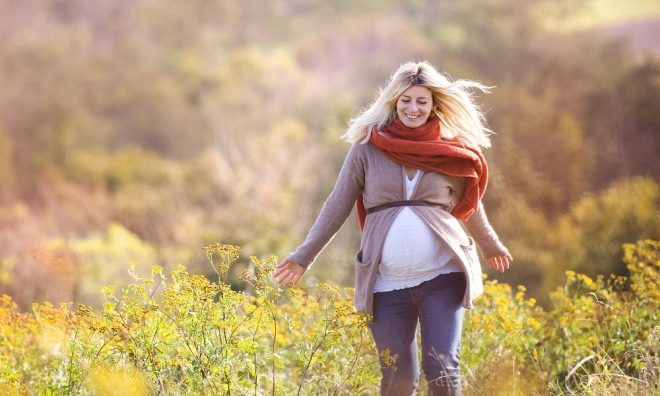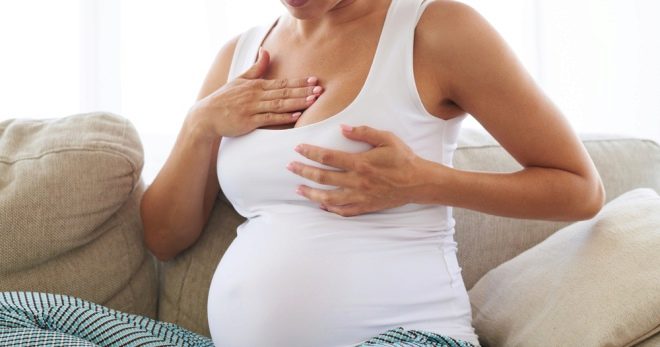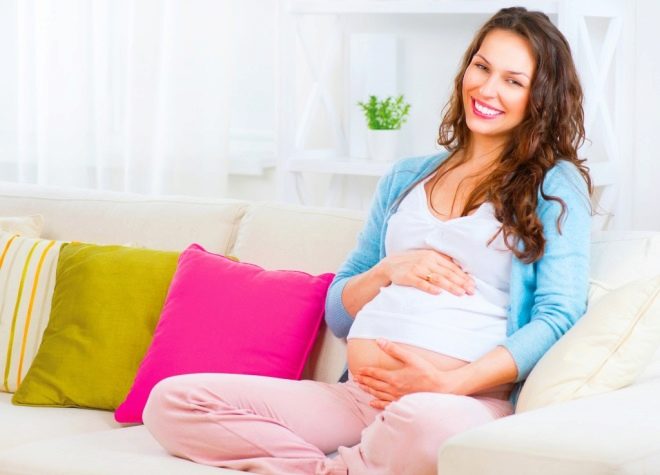Features of the second trimester of pregnancy
There are pregnant women who do not notice the onset of the second trimester - their pregnancy proceeds easily, at ease, without any particular unpleasant sensations. But, according to statistics, in 8 out of 10 women still experience toxicosis, and therefore the majority still expects the onset of the second trimester, as salvation. The second third of carrying a baby usually brings relief.
When does it begin and end?
In order to be comfortable to keep track of the duration of pregnancy, in the past century, the concept of "trimester" was introduced in obstetrics. Only three of them, each of them is equal to three months. The second trimester starts at the 14th week of pregnancy and ends at 27 weeks. If we take it by week, then it is 14 weeks, if it is more usual for a woman to be considered months, then the second trimester covers the fourth, fifth and sixth months of pregnancy and slightly captures the seventh.
From the point of view of doctors, this is the period of systemogenesis, when the child’s systems of the body actively tune in to full-fledged work. Obstetricians call the second trimester medium fetal (fetal).
Women almost unanimously call this period “golden time” - the anguish, trouble and excitement of the first third of the baby’s term have already been left behind, the main dangers and risks to the fetus have also passed, but at the same time there is still quite a long time before birth. It is not difficult to carry the pregnancy, it is not so difficult - the baby is not so big that the mother can experience physical discomfort. On the other hand, the crumb is not so small, and it was during this period that the woman makes the first contact with him - she picks up his movements and learns to guess his mood and state.
The baby is no longer so susceptible to negative influence from the outside, now he is under reliable protection of the formed and existing placenta, this opens up new opportunities for the expectant mother - some medications that were banned in the first trimester are allowed.
Baby development
The fetus from the 14th week does not grow as intensively as it did at the beginning of pregnancy, and the changes in its body are no longer so large-scale. Weight gaining comes in first place - this is very important for its viability. The accumulation of subcutaneous fatty tissue will not only allow the child to look like a cute baby and gain weight, but also provide an opportunity to independently retain body heat so that system hypothermia does not occur.
The heart of the baby knocks rhythmically, clearly, pumping up to 24 liters of blood per day, but so far the load on its departments is uneven: the right side is more active than the left. The left divisions will become equal to the right only by the end of the period of intrauterine development, when the placenta is old and the blood flow is not so intense. Up to 50% of the baby’s total blood volume goes to the brain, the rest goes through the aorta to the baby’s lower body.
The development of the lungs continues. The baby receives oxygen from maternal blood, but tiny lungs already make the first respiratory movements. Some experts believe that this way the respiratory reflex is established, while others believe that the strange movements of the lungs are necessary for the child to promote the processes of cellular metabolism. Alveoli are formed by weeks 22-23, and the most important process soon starts - the formation of a special substance of the surfactant - phospholipid, which will envelop the alveoli, preventing them from sticking together after the baby makes its first independent breath.
The longer the baby stays in the womb, the higher the likelihood that surfactant will accumulate enough. In preterm labor, respiratory failure poses a great danger.
The baby in the second trimester acquires its own immunity, still weak, but already able to repel some threats and dangers. The entire trimester continues the development of kidney structures. The amount of medulla is constantly growing and the cerebral cortex is formed.
If we consider the main stages of the development of your baby in the second trimester, it is worth noting a number of events.
14 week
In the second trimester, the baby enters even small - its weight does not exceed 50 grams. Hair grows, and many babies have quite a lot of them. All the kids, regardless of the genetic program laid down by their parents, are natural blondes so far. Pigment, coloring the eyelashes and hair, will appear later. The formation of fingers is completed, and now the baby has its own, unique, incomparable fingerprints. The kid rehearses the mimic movements - he grimaces and smiles.
15 week
The body of the baby is thickly covered with original cheese-like lubricant. The skin is too thin and defenseless. The brain acquires the first gyrus. Peristalsis of the intestine is formed, dark green feces - meconium - are already being deposited in it. They baby will go to the toilet after birth during the first day. Male fruits begin to be maintained in development by sex with their own hormone testosterone.
16 week
In just a couple of weeks, the baby almost tripled its weight - about 120-140 grams weighs the fruit at this time. The oculomotor muscles develop, the eyeballs begin to move. There are eyelashes. Primary hearing is formed: as long as only the middle ear is developed, the inner one does not function as it should, therefore the baby only hears vibrations from the sound waves.
The body of the child produces all the blood cells, and at this time it also has its own hemoglobin. The external genitals are clearly visible - it is possible to accurately determine the gender of a child during an ultrasound examination.
17 week
The baby all the time until this point was less than the placenta, and now he has overtaken her in size. From this date, weight gain will be a priority for the baby. Improved hearing, there is an opportunity to catch high-frequency sounds. The movements of the child become more complex, the brain gradually begins to control them, but in general they remain chaotic.
18 week
The fetus reaches a weight of more than 210 grams with a growth of 22 centimeters, body proportions begin to come in order - the big head now grows slower than the rest of the body, which will allow the child to look proportional at birth. The legs grow faster than the arms, and now for the first time in the intrauterine state, they have become longer than the upper limbs.
19 week
This week, a woman who already has the experience of motherhood begins to feel perturbations, and primiparas still may not feel anything unusual - until 22 weeks this is completely normal. The hearing of the fetus is improving, the structures of the inner ear are fully formed and functioning.
20 week
By mid-pregnancy, the baby comes with weighing almost 350 grams and growing about 24-26 centimeters. The skin becomes more durable, and the gradual process of getting rid of lanugo and cheese-like lubricants begins.
A blinking reflex is being trained, although the child does not know how to fully open and close his eyes. The movements at this period feel up to 90% of pregnant women for the first time.
21 weeks
The nervous system is actively being formed - neural connections are being pulled from all organs to the brain, while impulses are still inaccurate, uneven, but can already be registered. Fetal movements are active, the crumbs already have something like their own regime.
22 week
From this week, the fetus acquires a new status - the perinatal period of its development begins. If the baby is born now, it will not be considered a miscarriage. Deliveries will be premature, the degree of prematurity is severe, but the chances of survival will still be. Intensive processes take place in the lungs where the production of surfactant began.
23 week
The weight gain continues, but now it is difficult to compare the size of a particular fetus with the standards - from this point on all children will be increasingly different from each other. According to the genetic program laid down in them by the parents, some are already larger, others are more miniature. There is a systemogenesis of the endocrine glands, in particular, sweat and sebaceous glands begin to work.
24 week
The tremors in the womb are getting stronger, but so far there is no need to count the movements. Toddlers average weight is 600 grams. The brain continues to build mass.
25 week
Adaptation processes in a children's organism start - at the most different level the kid learns a difficult science of survival. Numerous wrinkles on the skin of the baby have smoothed out. In the case of birth in this period, the chances of survival, according to WHO, are estimated at 16%. Baby dreams.
26 week
The child begins to tumble and spin around less often. Places in the uterus becomes smaller, and now it is most convenient to be in the natural position - head down. If the fetus does not turn over, the chances for an independent reversal still exist.
Began to harden the auricles, which are still represented by a rather soft cartilage tissue. The pituitary of the baby begins to produce growth hormones. If there are few of them, then surfactant production will also slow down - this is the main reason for the immaturity of the lungs in full-term babies (this also happens).
Boys testicles descend into the scrotum. Ovaries of girls from the first trimester are located in the pelvis.
If the baby is born at this time, the chances of survival are estimated at 35%, the risk of disability also decreases.
27 week
With a weight of 1 kilogram, the 37-centimeter fetus hardly fits in the full growth of the uterus. He begins to take a bent position in which he will stay until the birth. From this moment it becomes quite difficult to determine the sex of the child on ultrasound, especially if he places the handles between bent legs, or the umbilical cord passes there. The optic nerve is being improved. Survives up to 75% of children born this week. The risks of disability do not exceed 7-9%.
Woman's well-being
With the beginning of the second trimester begins active growth of the abdomen. If at the 12th week the uterus barely begins to leave the limits of the small pelvis and rise into the abdominal cavity, by the end of the trimester it takes up to 70% of the space inside the abdominal cavity, and the internal organs begin to experience certain inconveniences. But this is only at the end of the period. It always begins quite easily: it passes toxemia, it is not so often sick, and by the 16th week, nausea usually passes completely.
If a woman eats properly, diarrhea, heartburn and constipation in the second trimester of pregnancy is an infrequent phenomenon.. If in the early stages such unpleasant symptoms were caused by a high level of progesterone in the expectant mother’s body, and in the third trimester mechanical pressure of the digestive organs of the large and heavy uterus will lead to such symptoms, then there is no reason for the unpleasant symptoms.
Frequent urination occurs as a result of progesterone exposure., and if now the woman begins to constantly feel the urge to empty her bladder, with high probability, we are talking about cystitis.Nasal congestion, which is not associated with a runny nose as such, also retreats - it was a “side effect” of progesterone, which accumulated fluid in the body, making the mucous membranes looser and edematous.
In the second trimester, due to the increased amount of circulating blood in women, the pressure decreases somewhat, and this is normal. But already by the end of the period low pressure becomes normal again, returns to a condition that was peculiar to a woman before the onset of pregnancy.
The fetus is still small, but the growth of the uterus can still be felt. From 16-17 weeks, the woman feels the uterus in a sitting position, when trying to change the position of the body from the 20th week of gestation, weak back pain can be observed, right and left in the lower abdomen - so stretch the ligaments that keep the growing uterus in the middle position. Changing the shape of the uterus.
Discharges normally become slightly more abundant than they were in the first trimester. - to maintain the balance of the vaginal microflora, the cervix produces more secretion.
It is important to know that the normal discharge is light, white or yellowish, odorless and uniform in consistency.
If the discharge becomes bloody, brown, it can be an alarming sign of late miscarriage or premature birth, a sign of problems with the placenta. With greenish or gray discharge, purulent inflammation and intrauterine infection should be excluded. If the discharge is white and cheesy, accompanied by severe itching, the thrush has worsened, appropriate treatment is necessary.
Headaches are usually unusual for the second trimester, and only at the very end can a woman notice that she has a headache in the evenings. In this case, it is important to control the level of blood pressure - its increase may be one of the signs of preeclampsia.
Insomnia can be caused by the need to sleep only in one pose on one side. Neither on a stomach, nor on a back in this trimester it is already impossible to sleep. Relieve falling asleep will help a special pillow for pregnant women. You can buy it or sew it yourself.
Breast in the middle of pregnancy usually does not hurt. The primary stage of preparation of the mammary glands for breastfeeding was completed in the first trimester, and the final stage will occur only in the later periods. A large chest delivers only physical inconvenience - the back can ache, because the center of gravity changes not only because the belly grows, but also because you have to hold the chest, which has grown almost 2 sizes.
In the second half of the second trimester, the woman may begin training bouts - short-term tension of the uterine muscles, does not approximate delivery. They are not of a systematic nature, are not regular, their origin to science, in general, is still not entirely clear. It is believed that this is the way the nervous system of a woman prepares for childbirth - a reflex act.
And also at the end of the second trimester, some women note that their pubis and tailbone hurt. From this time on, the body begins to produce a special hormone, relaxin, which softens the ligaments and bones in order to prepare the pelvis for physiological expansion and divergence in the generic act.
You need to consult a doctor only when the pain is very strong and prevent you from sitting, walking and standing.
Possible problems and complications
Although the second trimester is considered safe, a woman should know exactly what difficulties may be and how to recognize them.
Placental insufficiency
The placenta is a vital organ for the baby. Problems with the placenta during normal pregnancy usually do not occur. Placental insufficiency is a dangerous condition associated with impaired blood supply to the “children's place”. If it is chronic, then this leads to a delay in fetal development. Gradually developing shallow water.Against the background of a lack of oxygen, the baby develops hypoxia, his motor activity gradually decreases.
Most often, the complication develops in women with tumors in the uterus and ovaries, patients with endometritis, in women with chronic hypertension, kidney disease, with low placentation and the prevalence of "baby". The most dangerous is placental insufficiency in the period from 22 to 27 weeks, when the child is actively forming the cerebral cortex. The consequences can be different - from the death of the fetus to its mental and mental inferiority.
Given this, the best time for diagnosis is considered 22-24 week of pregnancy - at this time it is recommended to do an ultrasound with a doppler. In small doses, aspirin, which was banned in the first trimester, "Curantil", "Actovegin", "Trental" and other drugs, including vitamin preparations, are used in treatment.
Gestosis
From the second half of the second trimester, women should be especially attentive to their health - signs of preeclampsia are possible. This is a dangerous complication that occupies one of the leading places for the causes of mortality of women in childbirth and stillbirth in children. If early toxicosis was agonizing with its vomiting and dangerous dehydration, then late (which is preeclampsia) is a triad of symptoms: edema (external and internal), high blood pressure and the presence of protein in the urine.
Gestosis is more insidious than toxicosis. Often, women do not even pay attention to the fact that the ring on her hand was not enough, and the usual worn-out shoes are a little tight. But the most dangerous are internal edema, which is not visible to the naked eye. When gestosis disrupts the work of the internal organs, most often the liver, kidneys, brain, lungs.
Severe preeclampsia at the end of the second trimester may require early delivery, which is dangerous for the baby.
Late miscarriage
As a rule, in the second trimester, the risk of miscarriage is significantly reduced, but this probability is not completely excluded. The reasons for which this can happen are numerous - from fetal malformations that the baby was able to survive in the first trimester, but which disrupted the functioning of his body at the stage of systemogenesis, to disturbances in the state of the placenta, cervical insufficiency.
Signs - severe pain in the lower abdomen, in the back, unusual (usually bloody) discharge. Usually this is preceded by an increased uterine tone. Examination shows a change in the frequency or absence of fetal heartbeat. The woman feels weak, dizzy, she is pale, the pressure is low. The faster a woman calls an ambulance, the more likely it is that the pregnancy can be saved., if we are not talking about fetal death. If the baby is alive, the waiting tactic is taken as the basis.
If water is leaking, try to keep the pregnancy. The woman is in a sterile ward, she is given solutions of tocolytics, and strict bed rest is indicated. Successful is the preservation of pregnancy up to 34 weeks. Damaged fetal membranes have every chance to stick together on their own, and then the leakage will stop.
If it is already impossible or impractical to preserve the pregnancy (the baby has severe defects), stimulate childbirth through natural ways. Then the uterine cavity is additionally scraped with a curette. If the gestational age is above 22 weeks, a pediatrician will be present at birth in case the baby survives - then all the necessary resuscitative care will be provided.
Cervical insufficiency
ICN - cervical dysfunction. Instead of serving as a reliable constipation for the reproductive organ throughout the entire childbearing, the neck, due to its weakness, begins to smooth out, soften and open slightly ahead of time. Pathology can be identified from the first weeks of the second trimester. Most often diagnosed ICN up to 22 weeks of pregnancy.
Treat condition can and should be, and modern medicine has learned to do it quite effectively - the neck is fixed in a static position either by suturing at 18-22 weeks, but if necessary, the operation is carried out earlier, or by imposing an obstetric pessary. Remove the stitches and pessary at 37-38 weeks of pregnancy, or with the onset of labor, if it starts earlier.
Viral ailments
Viral infections are no longer a great danger to the woman and the fetus if they are not accompanied by high fever. If a woman has herpes on the lip and a temperature of 37.0 degrees, no treatment is required. Mom's body will cope with the problem. But at flu and acute respiratory viral infections with fever are required to receive antipyretics - High fever can disrupt uteroplacental blood flow and lead to placental insufficiency. Can be used in acceptable doses "Paracetamol, But aspirin should be avoided.
The baby is reliably protected by the placenta, it has a basic immunity of its own, and therefore there is no need to take antiviral drugs, especially since such drugs cannot boast.
Painkillers are also possible, but not all - the doctor will choose the appropriate remedy depending on the type, intensity and nature of the pain. Many women use the no-shpu antispasmodic as an analgesic.
FAQ
Let us examine the most frequent questions of pregnant women in the middle of the term of carrying.
Antibiotics
In the first trimester, doctors strongly advised to avoid antibacterial drugs, because when forming the organs of the baby, these drugs could lead to serious defects. Now the body crumbs fully formed. Antibiotics are permissible, but not harmless - they will not cause gross defects, but can cause disruption of the functioning of organs and systems.
Local antibiotics are not prohibited - drops in the nose with purulent sinusitis, for example, an antibiotic ointment on the wound with signs of infection, and so on. The systemic intake of such a group of medicines still needs to be taken very seriously. A doctor may prescribe penicillin group antibiotics or macrolides for sore throat, pneumonia, pyelonephritis, tuberculosis, chlamydia and other diseases that threaten a systemic bacterial infection.. But always the risk of the effect of antibiotic on the fetus is evaluated in terms of the benefits that antibiotic therapy can bring to the mother. If her illness threatens the child more than the antibiotic, treatment will be prescribed.
Ototoxic antibiotics (gentamicin), which cause deafness and hearing impairment in children, as well as quinolones, synthetic antibacterial agents, are still prohibited.
Independent reception of antibiotics without the knowledge of the doctor is strictly prohibited.
Sex
In the second trimester, women usually increase libido, and there are no prohibitions on intimate life, but only on condition that the doctor has no objections. Physicians will object if a woman has hypertonicity of the uterus, a threat of late miscarriage, premature birth, if a pessary is applied or stitches are placed on the cervix. A healthy pregnant woman whose condition is not worrying can enjoy a full-fledged sex life.
Considering that with the beginning of the second trimester, abdominal growth begins, the couple needs to more carefully choose postures - avoid those in which the penetration is as deep as possible, as well as those in which the partner can squeeze the uterus with its weight.
If after sex the stomach hurts, there are abnormal discharge, you should immediately seek medical help.
Travels
Trips to the sea or to the mountains in the second trimester are not prohibited, as are not prohibited, and flights by air.Only from 27-28 weeks, some airlines are beginning to ask the expectant mother for help from the attending physician that the flight is safe for a woman. If you are a happy owner of a big belly, then such a certificate should be taken at an earlier date in order to avoid misunderstandings when boarding your flight.
It is not recommended to fly for women whose pregnancy is complicated.described above. Even with one of them, the doctor will not agree to give a certificate, permission to fly.
In the opinion of women, gynecologists, in general, are very reluctant to give such information even to healthy pregnant women, because the flight itself is often not dangerous, but acclimatization after the change of time zones and climatic zones.
Surveys and analyzes
From the middle of the second trimester (approximately from week 20), you will need to visit the doctor more often - once every two weeks. At each reception, they must be weighed, inspect the wrists and ankles of the woman for edema, blood pressure is measured. This is a way to detect signs of preeclampsia, if it appears, as early as possible. In addition, the woman before each visit to the doctor passes a complete urinalysis, so as not to miss the moment the appearance of protein in it.
Control the length and position of the cervix. Repeat blood tests for HIV and syphilis. Doppler ultrasound can be carried out not only at the scheduled time for the second prenatal screening (from 16 to 21 weeks), but also at any other time, if this information is necessary for the doctor to make sure that the child and his mother are OK.
Women who have previously identified problems with hemostasis may be assigned a coagulogram with the obligatory determination of fibrinogen factor. Women are recommended to do an analysis of thyroid-stimulating thyroid hormones right now. Norm TSH means that the child has no problems with growth hormones, and it develops according to the terms.
When signs of gestosis are found, treatment is prescribed for any period. If at the beginning of the second trimester there are prerequisites for the development of preeclampsia (a woman is prone to suffer from hypertension, protein is found in the urine, and so on), then preventive therapy is carried out at 15 and 20-22 weeks of pregnancy.
Recommendations
In general, carrying a baby in the second trimester is a fairly easy and enjoyable experience. To make it even more enjoyable will help simple and effective advice of experts, which at this time is worth listening.
Nutrition
In the first half of the second trimester, the process of mineralization of the baby’s bones is active. He takes a lot of calcium from the mother's body. Women try to diversify their diet with foods with high calcium content and think that they are doing this for the baby. In fact, they do it exclusively for themselves - the baby will in any case take as much calcium as he needs, even at the cost of osteoporosis from the mother. Therefore, calcium is needed, but needed for a woman. As much as required. If the nails become brittle, the teeth ache and break, the hair splits, increase the amount of calcium in your menu. If there are no visible signs of hypocalcemia, it is enough to include dairy products in the diet., cottage cheese, fresh greens and sea fish.
From the second half of the second trimester, they reduce the amount of fat, but add the amount of healthy light carbohydrates. The baby begins to actively gain weight, mom's appetite increases, and abnormal weight gain and obesity are not excluded when busting with fats, and this can significantly complicate the upcoming third trimester and childbirth.
The woman has a high need for fast-digesting carbohydrates (cereals, cereals), animal and vegetable protein. It is necessary every day to include in your diet fresh vegetables and fruits.
Meals should be 5-6 times a day, small portions. A woman should not starve, but she should not overeat, trying to eat “for two” either.
Completely prohibited: fried and smoked, salted and pickled, coffee, beer and other alcoholic beverages, store sweets and juices in packs, carbonated drinks. You can not eat canned food, fast food. It is better to eat homemade, steamed, boiled, baked, stewed dishes. The presence of vegetable oil and fresh vegetables will effectively prevent constipation and exacerbation of hemorrhoids. The lack of spices and large amounts of salt will prevent the formation of gestational edema.
Vitamins
Many people think that multivitamins for pregnant women are especially helpful in the first trimester. This is a big and sometimes total delusion. During the period of the formation of organs and systems of the fetus, an excess of certain vitamins can cause malformations, and therefore in the first trimester such drugs are indicated only for women who have hypovitaminosis in their biochemical blood tests, and women with malnutrition.
Everything changes in the second trimester. The immunity of a woman for several months has been diligently suppressed at the hormonal level, and even a healthy woman with good nutrition begins to experience a certain deficiency of nutrients and minerals. An active weight gain for a baby is accompanied by its increased need for vitamins, and therefore, taking multivitamins from the second trimester is highly desirable.
Your attending obstetrician-gynecologist will help you choose the right drug.. Existing tools are different in composition, dosage, components.
It is necessary to select the product taking into account the individual need for certain substances, as well as taking into account the possible individual intolerance of certain components. There is still a high need for a woman's body in folic acid, in vitamins of group B, in vitamins E, D, K.
Physical activity
There is no need to reduce their physical activity, unless otherwise recommended by a doctor. If a woman is engaged in sports before pregnancy, you should refuse to lift weights, jumps into the water, or fall. For the rest adequate physical activity will not only help maintain the mood and overall body tone, but also helps to effectively prepare all muscle groups for the upcoming labor.
For a lighter third trimester and timely preparation of muscles for labor, it is important to pay attention to all muscle groups, but especially to the muscles of the pelvis. In this task, the complex of Kegel exercises, yoga for pregnant women will help. Even if a woman has never been engaged in fitness or sports, it is worth now to master exercises for pregnant women.
During exercise, the woman should additionally support the belly with a bandage. Charging does not mean jumping and abdominal exercises. But the allowed tipping, bending, rotation of the body with a fixed pelvis, exercise using fitball.
Regardless of how athletic a future mother is, every day you need to take walks in the fresh air. In this trimester, homework is easy to do, it is quite possible to arrange a shopping trip in search of a dowry for the baby, you can do the arrangement of the children's room.
Personal care
A woman can still take a bath - it is not dangerous if there is no leakage of water or premature discharge of the mucus plug from the cervix. Pruritus caused by stretching of the skin on the lateral surface of the mammary glands, abdomen, does not need treatment, but needs moisturizing with a children's cream or special means for stretch marks. They increase the elasticity of the skin.
You can dye your hairbut it is recommended to avoid using cosmetics with a large amount of harmful impurities.. It is better to use natural dyes. If this is not possible, it is better to refrain from staining.
Breast will look much better after childbirth, if a woman starts to wear a special bra with wide straps and reliable supporting cups.If colostrum is released (which is not uncommon for multiparous ones), then you can choose a breast for nursing mothers at once - it has convenient pockets for interchangeable liners so that the colostrum does not stain your clothes.
Nipples need to gradually begin to prepare for breastfeeding - wash the breast and wipe it with a hard towel, but try not to stimulate the nipples too much - this can lead to the release of oxytocin, which can provoke premature birth.
More abundant vaginal secretions need to be strengthened by personal hygiene measures. It is necessary to wash away 2-3 times a day, trying to avoid using soap with a large number of perfumery additives. During the day, you need to use sanitary pads - vaginal tampons at any stage of pregnancy are prohibited. The gasket will help you notice even the slightest change in color, texture and smell of vaginal secretions.
Tanning pregnant women is contraindicated, You should also not visit the bath and sauna - overheating can cause premature birth or placental abruption and the death of the baby.
Clothing from the second trimester should be comfortable, loose, not chilling movements. It should be sewn of natural fabrics - do not forget that from the 14th week of pregnancy the sweat glands begin to work more actively, sweating increases. Breathable clothing will help avoid overheating and unpleasant body odor. Try not to wear trousers and skirts with elastic bands and tight belts that can squeeze the stomach. If there is a tendency to varicose veins, now you need to pick up two pairs of compression (hospital) stockings.
A woman should monitor her weight, weighing is recommended weekly. This is important not only in order to track the increase, but also in time to notice the pathological excess of body weight, which can be a sign of internal edema and preeclampsia.
Behavior rules
From the second trimester, a woman needs more sleep. Average Experts recommend bringing the duration of a night's sleep to 9-10 hours, or sleeping at night for 8 hours and adding 2 hours of day rest, if possible. In a dream, a woman produces more different hormones that are now important for two. Lack of sleep can lead to very sad consequences.
Despite the fact that the most dangerous period has passed, it is still worth staying away from crowded places, especially during the cold season, especially in confined spaces. The risk of contracting chickenpox, influenza and other viral infections in them is very high.
Do not self-treat problems that are not even directly related to pregnancy. Folk remedies can be dangerous. Therefore, advice to take "Papaverine", if pulling the stomach or dripping onion juice in the nose, if it is not breathing, can turn into a tragedy.
On the second trimester of pregnancy, see the following video.

